Sports
USF Track & Field Sets Sights on Another Title Run at AAC Outdoor Championships
Story Links The USF men’s track and field program went back-to-back last season, capturing the American Athletic Conference indoor and outdoor team championships. Earlier this season, the Bulls repeated as AAC indoor team champions. With USF heading to the AAC outdoor championships — set for Thursday through Saturday at Charlotte, N.C. — […]
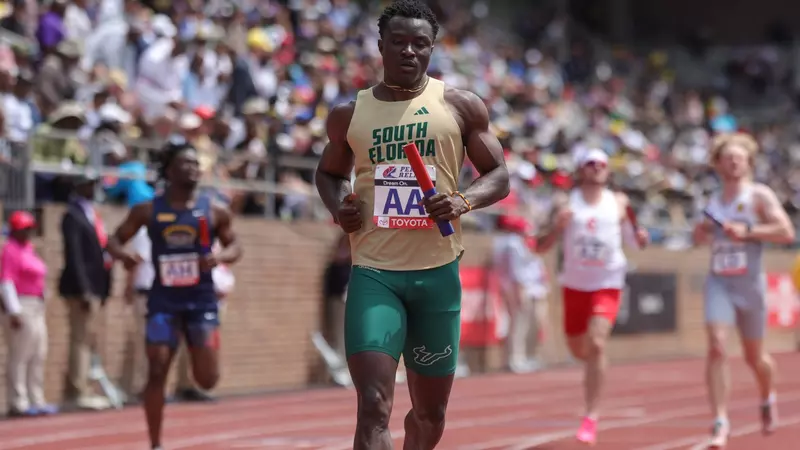
The USF men’s track and field program went back-to-back last season, capturing the American Athletic Conference indoor and outdoor team championships.
Earlier this season, the Bulls repeated as AAC indoor team champions.
With USF heading to the AAC outdoor championships — set for Thursday through Saturday at Charlotte, N.C. — an obvious question has emerged:
Can the Bulls go back-to-back … again?
“Winning is hard,” head coach Erik Jenkins said. “There’s nothing easy about it. There are no guarantees in any championship environment. So we have to take advantage of every opportunity presented to us.
“It always comes back to the athletes and putting them in a position to be successful. That means showing up on time, working hard, being available for what’s asked of you and really wanting to be successful. I believe we have a lot of those type of people. Now it’s a matter of showing up and performing.”
The USF men made a powerful statement last season, scoring 217 points (second-most in AAC outdoor championships history) and capturing first-place in 10 events.
Meanwhile, the USF women are hopeful of building toward championship contention. The Bulls finished third in last season’s outdoor championships — the best AAC performance in program history — to improve upon the fourth-place mark in 2023.
By all indications, the USF men are poised for another notable showing.
The Bulls have the AAC’s top-ranked time or distance in seven events, including the 100 meters (Abdul-Rasheed Saminu, 9.87w); 200 meters (Nathan Metelus, Jaleel Croal and Alexavier Monfries, all at 20.60); 400 meters (Gabriel Moronta, 45.31); 4×100 relay (38.66); 4×400 relay (3:02.13); pole vault (Nikodem Pochopien, 5.22 meters); and the discus (Vincent Ugwoke, 63.72 meters).
Additionally, the Bulls will have championship contenders in the 100 meters (Croal, 10.05); 200 meters (Saminu, 20.96); 800 meters (Karim Belmahdi, 1:48.54); 110 hurdles (Markel Jones, 13.66); 400 hurdles (Devontie Archer, 50.25); pole vault (Andreas Kreiss, 5.21 meters, and Noah Bitter, 5.06); triple jump (Javon Brown, 15.42 meters); and the shot put (Jason Nwosu, 17.90 meters)
“I think more people are noticing us since we’re put together some wins here and there, but we aspire to doing it over and over again at the highest level,” Jenkins said. “We want to be here to stay and you do that by controlling what you can do and putting yourself in position to consistently compete for championships.
“When we got here, we talked about competing for championships and building a national presence. We want success at the national level and also the international level. We had a couple of Olympians last summer. But at the end of the day, it’s a track meet, just like it’s a football game or a baseball game. Everything starts at zero. Nobody cares what we did at indoors or outdoors last year. Every time we step on that track, we’ve got to give our best effort and be the best at competing on that day. It always takes a collective effort.”
The USF women have the AAC’s top-ranked time in three events, including the 400 meters (Rushana Dwyer, 52.30); 100 hurdles (Doris Quainoo, 13.32); and the 4×400 relay (3:29.07).
Other Bulls to watch include Quainoo (100 meters, 11.51); Terren Peterson (200 meters, 23.15, and 400 meters, 52.97); Amenda Saint Louis (800 meters, 2:09.61); Tyra Thomas (100 hurdles, 13.41); Madeline Abega (400 hurdles, 57.78); Chakiya Plummer (400 hurdles, 58.45); 4×100 relay (44.36); Tristen Evatt (long jump, 6.07 meters); and Annalee Harbison (hammer, 54.64 meters).
“Our women have to take the same approach as our men — and I believe they will,” Jenkins said. “Every throw, every step, every jump — it all means something. Indoors, most people didn’t think our women could be in the top half. Well, we finished fourth in a pretty tight finish (first through fourth was separated by 13 points).
“Now everything starts at zero at these conference meets, no matter what you have done, and we definitely have some young ladies who are capable of performing at a high level.”
Sports
Why the SEC, Big Ten impasse over CFP format for 2026 matters to everyone
The offseason is definitely not the slow season as yet another week delivered news impacting both the Pac-12 legacy schools and other universities across the region. Here are four developments you might have missed. 1. CFP negotiations stall Nitty gritty: The Big Ten and SEC control the model for the College Football Playoff starting in […]
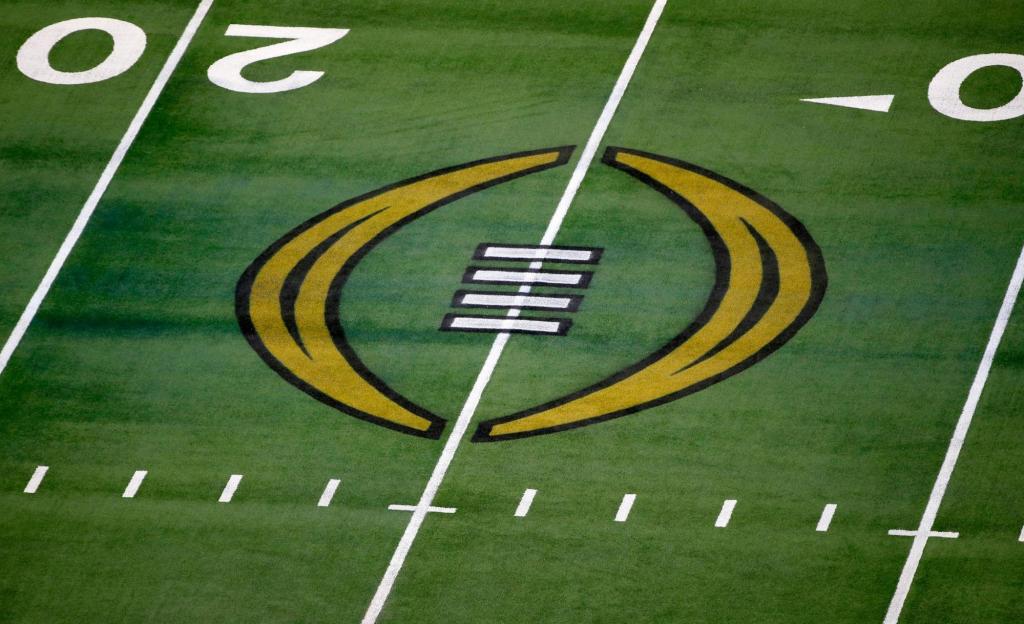
The offseason is definitely not the slow season as yet another week delivered news impacting both the Pac-12 legacy schools and other universities across the region.
Here are four developments you might have missed.
1. CFP negotiations stall
Nitty gritty: The Big Ten and SEC control the model for the College Football Playoff starting in the 2026 season and have not found common ground. The former wants a 16-team field based on automatic bids for the power conferences (the so-called 4-4-2-2-1 model) while the latter favored the 5+11 format that’s heavy on at-large bids.
During a meeting this week in Asheville, N.C., commissioners Tony Petitti of the Big Ten and Greg Sankey of the SEC decided a restart is in order.
“I wouldn’t say there’s a leading contender right now,” CFP executive director Rich Clark told reporters, “but they’re taking a fresh look at it.”
Why it matters: The CFP impacts everything in college football, and the model for 2026 has been the hottest topic in the sport for months. The impasse at the top of the governance structure creates the possibility, however remote, that the event won’t expand (to 14 or 16 teams) and, instead, will remain at 12. (That’s our preference, by the way.)
The commissioners are facing a Dec. 1 deadline to notify ESPN of any adjustments for 2026, when a new contract cycle begins. That might seem like plenty of time, but Petitti and Sankey, along with Jim Phillips of the ACC and Brett Yormark of the Big 12, have been discussing possible alterations for months and gotten nowhere.
Whatever format the Big Ten and SEC ultimately select will have sweeping implications for every major college conference, from the Big 12 and ACC to the Pac-12 and Sun Belt.
A model based on automatic qualifiers, for example, would free up the SEC and Big Ten to create a regular-season crossover series. That, in turn, would limit their opportunities to schedule non-conference matchups with teams in other leagues, particularly the ACC and Big 12.
There are other ramifications — too many to detail here, in fact.
Just know that distrust of the selection committee is rampant and common ground will continue to be elusive for the Big Ten and SEC. And they have the only votes that matter.
2. Commissioners mull new start date for football
Nitty gritty: Commissioners from the Football Bowl Subdivision conferences discussed moving the official start of the season up one week, to what is commonly referred to as Week 0: the Saturday before Labor Day weekend.
(If the change had been in place for the 2025 season, for example, everyone would start play Aug. 23. Instead, the season begins in full force Aug. 30.)
Why it matters: The Week 0 discussion has received little attention over the years but is one of the most important issues in the sport. In fact, it’s the key to unlocking the jammed postseason calendar.
College Football Playoff expansion to 12 teams created substantial overlap with the final weeks of the NFL season and playoffs. Last year, for instance, two CFP opening-round games (on Dec. 21) were up against a mammoth NFL doubleheader (Chiefs-Texans and Steelers-Ravens).
That’s a fight college football cannot win and should avoid at all costs.
(Another issue: Playing the semifinals on a random Thursday and Friday to get out from under the NFL’s wild card weekend.)
Starting the season earlier would reduce the frequency of CFP conflicts with the NFL’s stretch run. It would create an earlier date for the national championship. (The title game for the 2026 season is scheduled for Jan. 25, 2027.) And it would allow more mid-December flexibility for additional opening-round games if the CFP expands to 14 or 16 teams.
The move to Week 0 needs to happen for the betterment of the postseason — August is the key to December — which means the change will take years to implement, if it happens at all.
3. Washington State downsizes track and field
Nitty gritty: The Cougars announced Monday a competitive shift “to a distance-focused approach,” meaning they will no longer sponsor field events and will reduce the “number of sprint and hurdle opportunities.”
Why it matters: The canary is chirping, except it’s not in a coal mine — it’s trapped in a financial vise brought about by the revenue-sharing era in college sports.
With a maximum of $20.5 million being shared with athletes, schools must make hard choices about sponsoring the dozens of Olympic sports programs that lose money. (Only football and men’s basketball generate a profit.)
Washington State isn’t the first Division I school to announce a reduction in sponsored sports — Utah is cutting beach volleyball; UTEP has eliminated women’s tennis — and assuredly won’t be the last.
In other instances, Olympic sports could have funding reduced to the point they essentially become club teams.
Sports
Utah Royals 1st NWSL team to 10 losses this season after falling 4-1 to Seattle
SANDY — Based on the postgame mood, you wouldn’t have guessed the Utah Royals had just lost their 10th game of the season. The NWSL’s last-place squad reached the midpoint of its season with a 4-1 loss to the Seattle Reign in its 13th game of the year Saturday at America First Field. The home […]

SANDY — Based on the postgame mood, you wouldn’t have guessed the Utah Royals had just lost their 10th game of the season.
The NWSL’s last-place squad reached the midpoint of its season with a 4-1 loss to the Seattle Reign in its 13th game of the year Saturday at America First Field.
The home team was outmatched from wire-to-wire against the top-five team from Washington, giving up goals in the sixth, 16th, 66th and 91st minutes.
For a brief moment near the end of the first half, it looked like a comeback could be underway when Bianca St-Georges scored her third goal of the season for Utah, but it wasn’t to be.
The goal, which moved St-Georges into a tie with Brecken Mozingo for the team lead in goals, was the only one in the cards for the Royals on Saturday, despite leading the visiting team 14-10 in total shots.
The Royals enter the midseason break on an eight-game winless streak and a four-game losing streak, with the next league fixture not until Aug. 3. But still, a sense of optimism and belief remained with players and coach during press conference comments.
Perhaps it’s because the break gives the team time to recover from a brutal start to the season that featured two season-ending injuries and take another step in building “from the bottom out,” as head coach Jimmy Coenraets described it.
“Make sure you kind of just detach from the game and you get some time by yourself,” Coenraets said of his advice to players heading into the break. “I just want everyone to come back in the best possible headspace.”
The real reason for the optimism, however, is likely because Utah is approaching this season as one piece of a much larger puzzle. Coenraets said that since the Miller family took over team ownership in April, he has felt supported in building a foundation for what he called “a sustainable future.”
“Ever since the change, there was one clear message, and that’s, ‘Let’s build a foundation, and let’s build upon the foundation that we are building the next six months,'” Coenraets said. “We want to be competitive as much as we can, but we also want to make sure that by being competitive, we’re actually building for the future and not giving up the future to just get results.”
Utah will play a pair of friendlies against the San Diego Wave to break up the month-long break and several Royals will continue playing games with their respective national teams, including Ally Sentnor and Mandy McGlynn with the USWNT and Janni Thomsen joining Denmark for the UEFA Women’s Euro tournament.
The Key Takeaways for this article were generated with the assistance of large language models and reviewed by our editorial team. The article, itself, is solely human-written.
Sports
Minjee Lee's KPMG Women's PGA Championship Round 3 was 'remarkable'
June 21, 2025 08:02 PM Watch the best moments from the third round of the PGA Tour Champions’ third major, the Kaulig Companies Championship, at Firestone South. 0
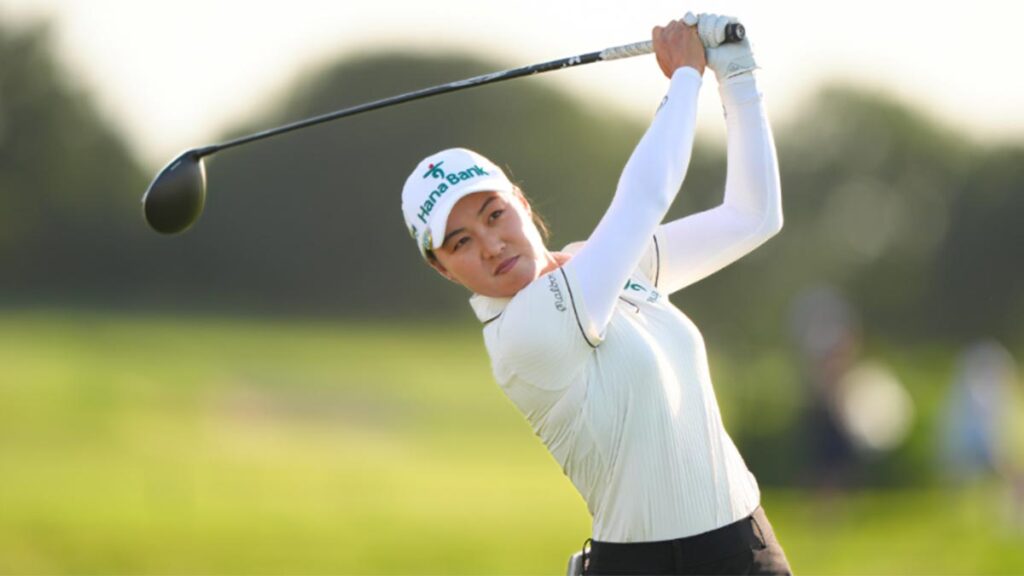
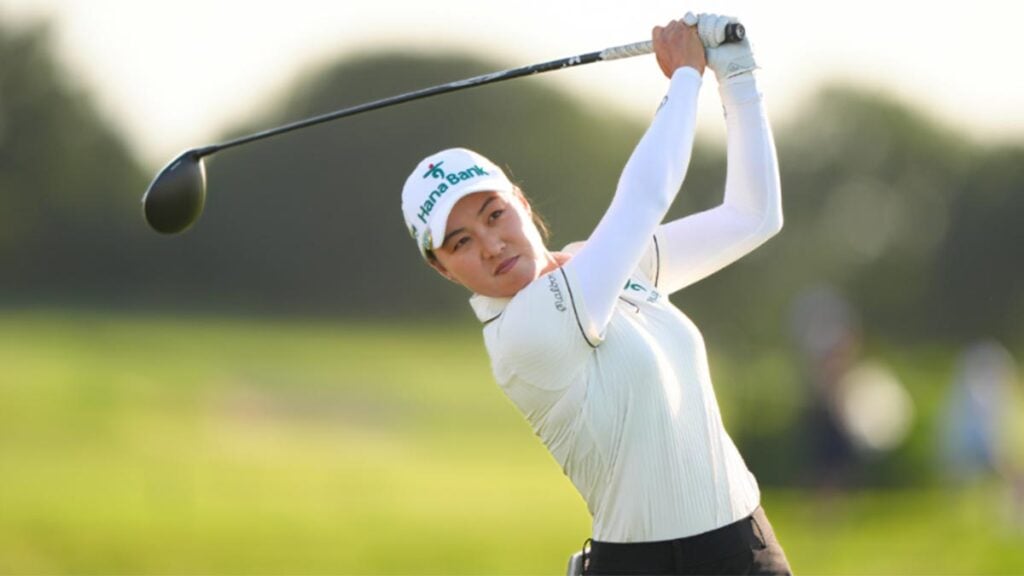

June 21, 2025 08:02 PM
Watch the best moments from the third round of the PGA Tour Champions’ third major, the Kaulig Companies Championship, at Firestone South.
Sports
Former Kansas State athletics director Steve Miller dies at age 81
Kansas State football coach Chris Klieman talks about roster limits Kansas State football coach Chris Klieman talks about his frustration with a lack of clarity over roster limits for the 2025 season. Former Kansas State athletics director Steve Miller, who helped sow the seeds for a historic turnaround in Wildcats football, died on June 15 […]

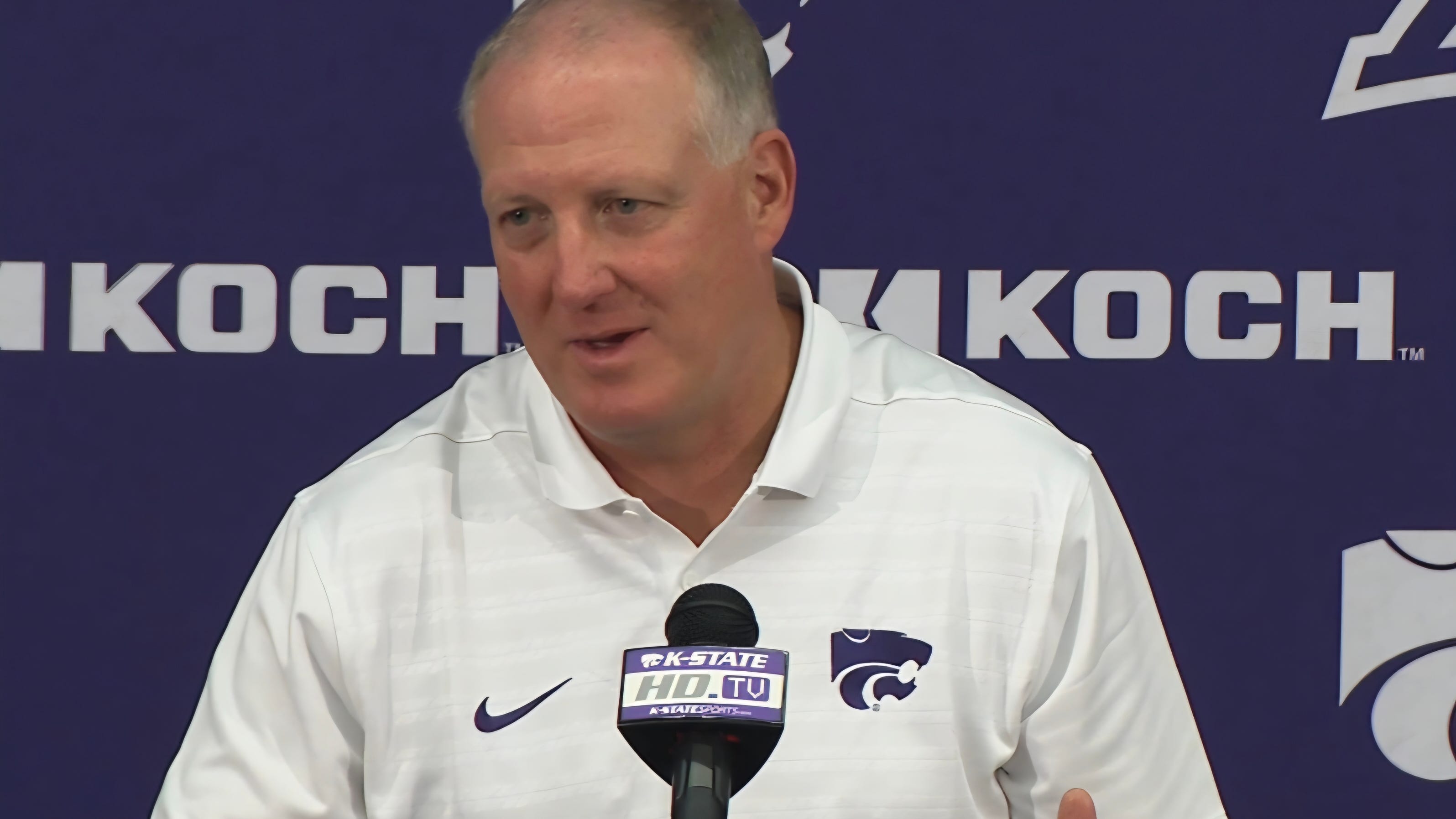
Kansas State football coach Chris Klieman talks about roster limits
Kansas State football coach Chris Klieman talks about his frustration with a lack of clarity over roster limits for the 2025 season.
Former Kansas State athletics director Steve Miller, who helped sow the seeds for a historic turnaround in Wildcats football, died on June 15 at his home in Portland, Oregon at the age of 81, according to a K-State news release.
Miller spent nine years at K-State — five as head track and field coach (1981-86), one as associate AD and director of the Mike Ahearn Scholarship Fund (1987-88) and the last three as athletics director. But he was best known for the Nov. 30, 1988, hiring of Bill Snyder as Wildcats’ football coach, which led to the resurrection of a program once described by Sports Illustrated as “Futility U.”
A celebration of life for Miller has been planned for 3 p.m. PT on July 7 at the Ritz Carlton in Portland.
“We are saddened to learn of the passing of Steve Miller, a true K-Stater who led our department during some of the most critical times in our history,” K-State athletics director Gene Taylor said in a statement. “Obviously his hiring of coach Snyder is well documented, but he also was a longtime figure in the track and field world and was a leader in that space for decades.
“From the first time I met Steve he became a trusted friend and over the last few years provided me great guidance and advice from his vast experience in the sports industry. He will truly be missed, and our thoughts and prayers are with his family.”
While credited with bringing future hall of famer Snyder to Manhattan as a first-time college head coach, Miller was a decorated coach in his own right. In 2005, he was inducted into the U.S. Track and Field and Cross Country Coaches Association Hall of Fame.
His 23-year career in track included 21 as head coach at Bloom Township High School (1965-76), Cal Poly (1976-81) and K-State. After leaving Manhattan, he served as an administrator with Nike, the Professional Bowlers Association and Agassi Graf Holding, and as a faculty member at the University of Oregon.
In addition to Snyder, Miller hired Dana Altman as men’s basketball coach in April of 1990.
Miller was born in Chicago on Sept. 9, 1943, and competed in track and football at Bradley University before a brief stint in the NFL with the Detroit Lions. He is survived by his wife Suzanne, daughter Claudine and son Christopher.
Arne Green is based in Salina and covers Kansas State University sports for the Gannett network. He can be reached at agreen@gannett.com or on X (formerly Twitter) at @arnegreen.
Sports
Pakistan reach Asian Volleyball Nations Cup semis after beating Indonesia
Pakistan players celebrate after winning their AVC Men’s Volleyball Nations Cup match against Indonesia at the Isa bin Rashid Hall in Isa Town, Bahrain on June 21, 2025. — Pakistan Volleyball Federation KARACHI: Pakistan secured a spot in the semifinals of the 2025 Asian Volleyball Nations Cup after a hard-fought victory against Indonesia in the […]
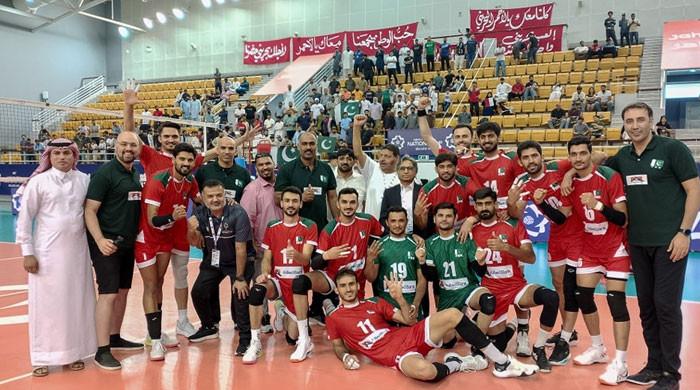
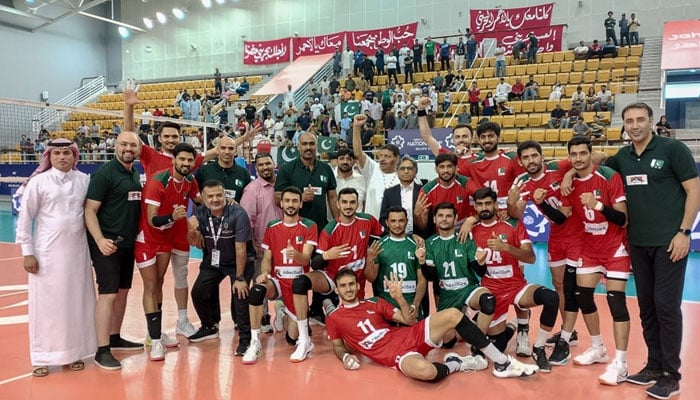
KARACHI: Pakistan secured a spot in the semifinals of the 2025 Asian Volleyball Nations Cup after a hard-fought victory against Indonesia in the quarterfinals.
After dropping the first set, Pakistan staged a strong comeback, winning three consecutive sets to seal the match 3-1. The final scores were 20-25, 25-21, 25-20, and 25-17.
Despite Indonesia’s early dominance in the opening set, Pakistan took control of the match with a resilient performance. Indonesia led in attack points with 56 compared to Pakistan’s 50, but Pakistan’s defence proved decisive, registering 16 block points against Indonesia’s 7.
Statistically, Pakistan’s efficiency proved decisive. Despite trailing in total attack points, they committed only 10 attack faults to Indonesia’s 21. Pakistan also held an edge in serve points (6-3) and benefited from 23 opponent errors.
The team’s ability to minimise mistakes while maximising defensive plays underscored their tactical improvement as the match progressed.
Murad Jahan, Pakistan’s captain, was the top scorer with 20 points, including 17 from attacks, two from blocks, and one from serves. Usman Faryad Ali contributed 16 points, while Fahad Raza and Murad Khan added nine and eight points, respectively. Pakistan’s strong blocking and efficient play at critical moments turned the tide in their favour.
Indonesia’s Rivan and Doni were the standout performers for their team, scoring 22 and 11 points, but their efforts were not enough to overcome Pakistan’s defensive discipline and balanced attack.
Sports
Team SA water polo team beat New Zealand at U20 World Championships
South Africa’s Under-20 men’s water polo team clinched a narrow victory over New Zealand on Friday morning at the 2025 U20 World Championships in Zagreb, Croatia. Team SA edges New Zealand in nail-biting water polo match The match, a classification game for final rankings, ended in a dramatic penalty shootout after regular play concluded in […]
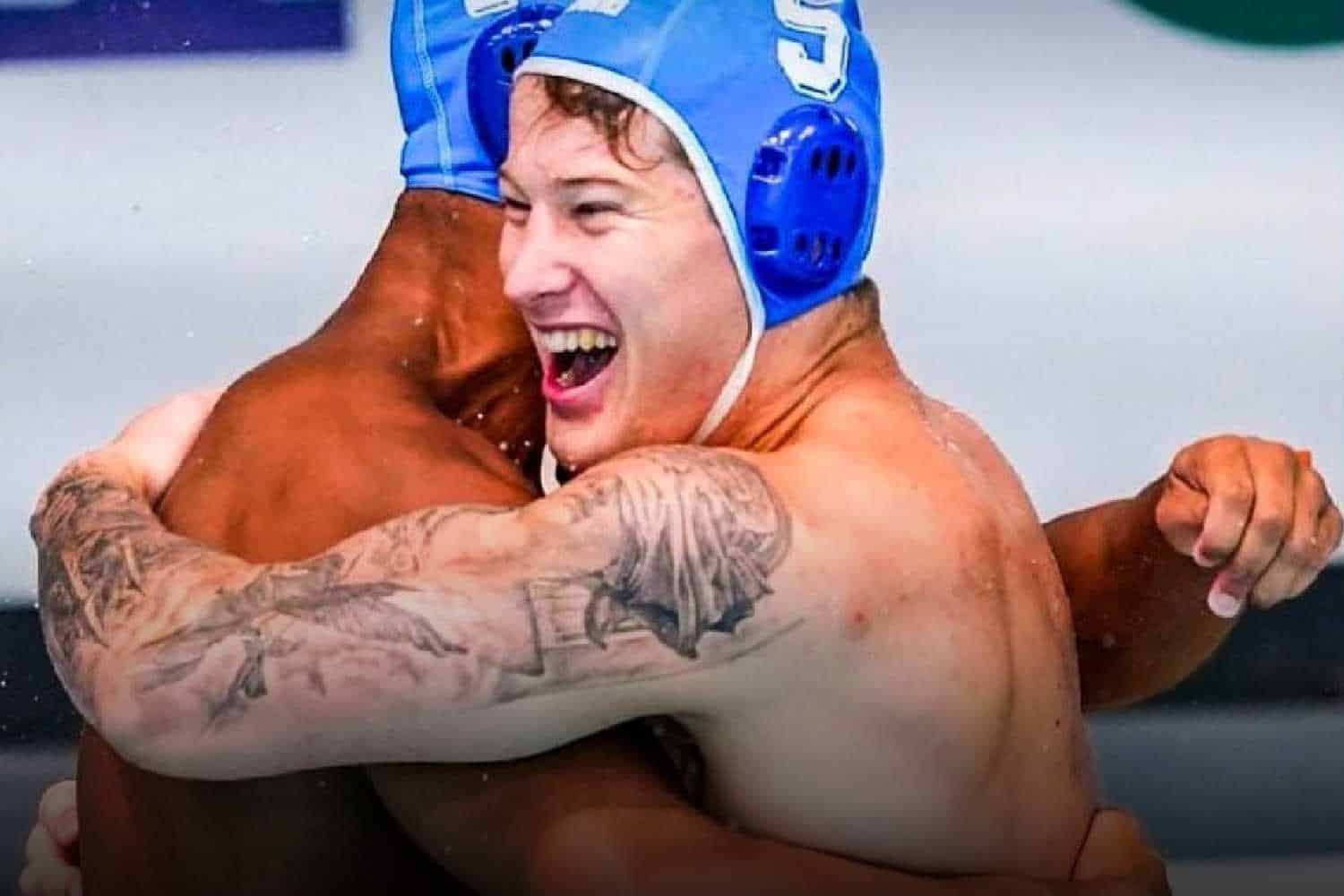
South Africa’s Under-20 men’s water polo team clinched a narrow victory over New Zealand on Friday morning at the 2025 U20 World Championships in Zagreb, Croatia.
Team SA edges New Zealand in nail-biting water polo match
The match, a classification game for final rankings, ended in a dramatic penalty shootout after regular play concluded in a tie.
The clash between South Africa and New Zealand was closely contested from start to finish. Both teams were evenly matched through all four quarters, with each side scoring 3 goals in the first, 4 in the second, 3 in the third, and another 3 in the fourth.
This brought the total score to 15-15 at the end of regular time.
As per tournament rules, the game progressed to a penalty shootout, referred to as PSO (Penalty Shoot-Out), when teams are tied and no extra time (ET) is played.
South Africa emerged victorious with a final shootout score of 3-2, bringing the overall score to 16-15.
South Africa’s squad featured a lineup of young talent, including goalkeeper Nathan Jacob, aged 19, and key drivers like Connor Flinn, David Johnson, and Karabo Mamaregane.
The team demonstrated strategic play and resilience throughout the match.
New Zealand’s team was equally competitive, with players such as Zach Martin (goalkeeper), Cole Phillips (centre/back), and Ashwyn Keshvara (wing) making notable contributions.
What happens next?
This win was part of a series of classification matches determining the final rankings of teams not progressing to the medal rounds. The tournament, hosted at the SP Mladost Pool in Zagreb from 14 to 21 June 2025, features national teams from across five continents, including powerhouses like Hungary, the USA, and Australia.
South Africa’s performance in this match positions them for a favourable ranking placement within the final classification. The team now prepares for its next match scheduled for the final day of the competition, which will determine their exact ranking between 13th and 20th place depending on outcomes across other games.
The 2025 U20 Water Polo World Championships are organised by World Aquatics and the Croatian Water Polo Federation. Held at the SP Mladost pool in Zagreb, the venue is known for hosting top-tier water polo events.
A total of 20 national teams are participating in this year’s competition, representing regions including Europe, Asia, Africa, the Americas, and Oceania.
The championships serve as a development platform for future professional and Olympic-level athletes, providing exposure to international competition and showcasing emerging talent.
-

 High School Sports2 weeks ago
High School Sports2 weeks agoParents Speak Out As Trans Pitcher Throws Shutout In MN State Quarterfinals
-

 Professional Sports2 weeks ago
Professional Sports2 weeks ago'I asked Anderson privately'… UFC legend retells secret sparring session between Jon Jones …
-

 Health2 weeks ago
Health2 weeks agoOregon track star wages legal battle against trans athlete policy after medal ceremony protest
-

 Professional Sports2 weeks ago
Professional Sports2 weeks agoUFC 316 star storms out of Media Day when asked about bitter feud with Rampage Jackson
-

 NIL3 weeks ago
NIL3 weeks agoMen's college basketball Top 25 reset
-

 Motorsports1 week ago
Motorsports1 week agoNASCAR Weekend Preview: Autódromo Hermanos Rodríguez
-

 Rec Sports3 weeks ago
Rec Sports3 weeks ago2x NBA All-Star Reacts to Viral LeBron James Statement
-

 College Sports3 weeks ago
College Sports3 weeks agoOKC’s Mark Daigneault knows what it takes to win championships. His wife has won a ton of them
-

 Social Media3 weeks ago
Social Media3 weeks agoControversial Athletics Gender Dispute Goes Viral After Riley Gaines Lashes Over Authorities
-

 Motorsports3 weeks ago
Motorsports3 weeks agoCorey LaJoie to make nine NASCAR Truck Series starts with Spire Motorsports









 (via @ncaachamps/TT)
(via @ncaachamps/TT)





















